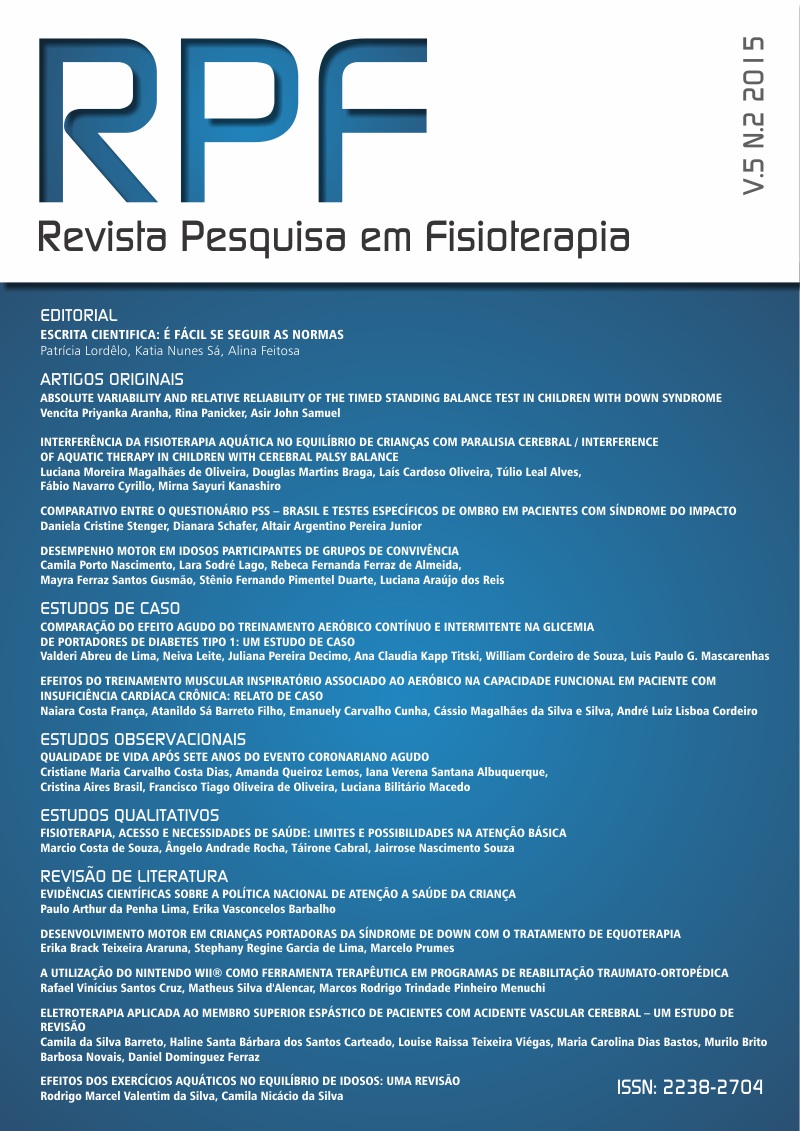ELETROTERAPIA APLICADA AO MEMBRO SUPERIOR ESPÁSTICO DE PACIENTES COM ACIDENTE VASCULAR CEREBRAL – UM ESTUDO DE REVISÃO
DOI:
https://doi.org/10.17267/2238-2704rpf.v5i2.585Keywords:
Muscle Spasticity, Physical Therapy Modalities, Stroke, Electric Stimulation TherapyAbstract
Introduction: Spasticity is a change in muscle tone secondary to an upper motor neuron injury usually due to a brain vascular disorder. Neuromuscular electrical stimulation has been used by physiotherapists in order to reduce spasticity, improve motor skills and performance in activities of daily living. Objective: To present the effects of applying neuromuscular electrical stimulation of the upper limb spastic muscles of patients with stroke sequelae. Methodology: The study used the PRISMA guidelines protocol for the preparation of a systematic review. The literature search was conducted in the period between December 2014 and March 2015 in the databases: MEDLINE / PubMed, PEDro, LILACS and Scielo. The following parameters were used: Spasticity, Muscle Spasticity, Physical Therapy and Physical Therapy Modalities. Results: A total of 6 studies. Researches show a significant reduction of spasticity in spastic upper limb muscles of patients with stroke sequelae, treated with muscle electrostimulation. Other results were also found, such as reducing pain and muscle spasm, improvement of motor function of the upper and increased active range of motion of the wrist and fingers. There is no consensus between the application parameters of treatment with electrotherapy. Conclusion: These studies show that the electrical stimulation applied to the upper limb spasticity patients with stroke, seems to contribute to the reduction of spasticity, improvement of associated complications and functional capacity. However, it is still low methodological quality and reduced the number of studies on the subject.



